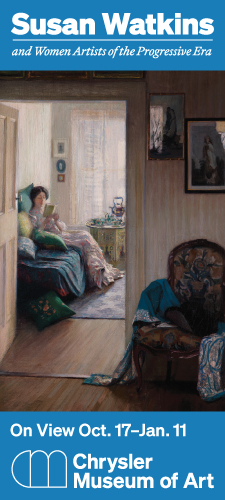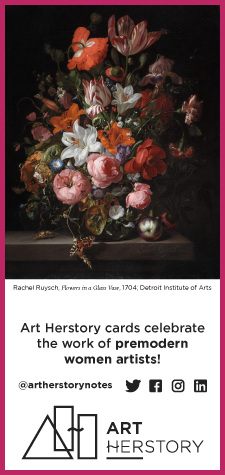by Jane Adams, Founder, Artemisia Gold CIC
A significant restoration
On December 14, 2024, a significant cultural moment took place. The Mayor of Montaione, Paolo Pomponi, together with Artemisia Gold CIC (a UK registered charity and business limited by guarantee) unveiled the restored painting Madonna del Rosario by Plautilla Nelli (1524–1588), one of Florence’s first known female artists, at the Chiesa dei SS. Giuseppe e Lucia in Montaione. This event marked the culmination of a thorough effort to study, restore and protect this important Renaissance painting, showcasing Plautilla’s talent and legacy.
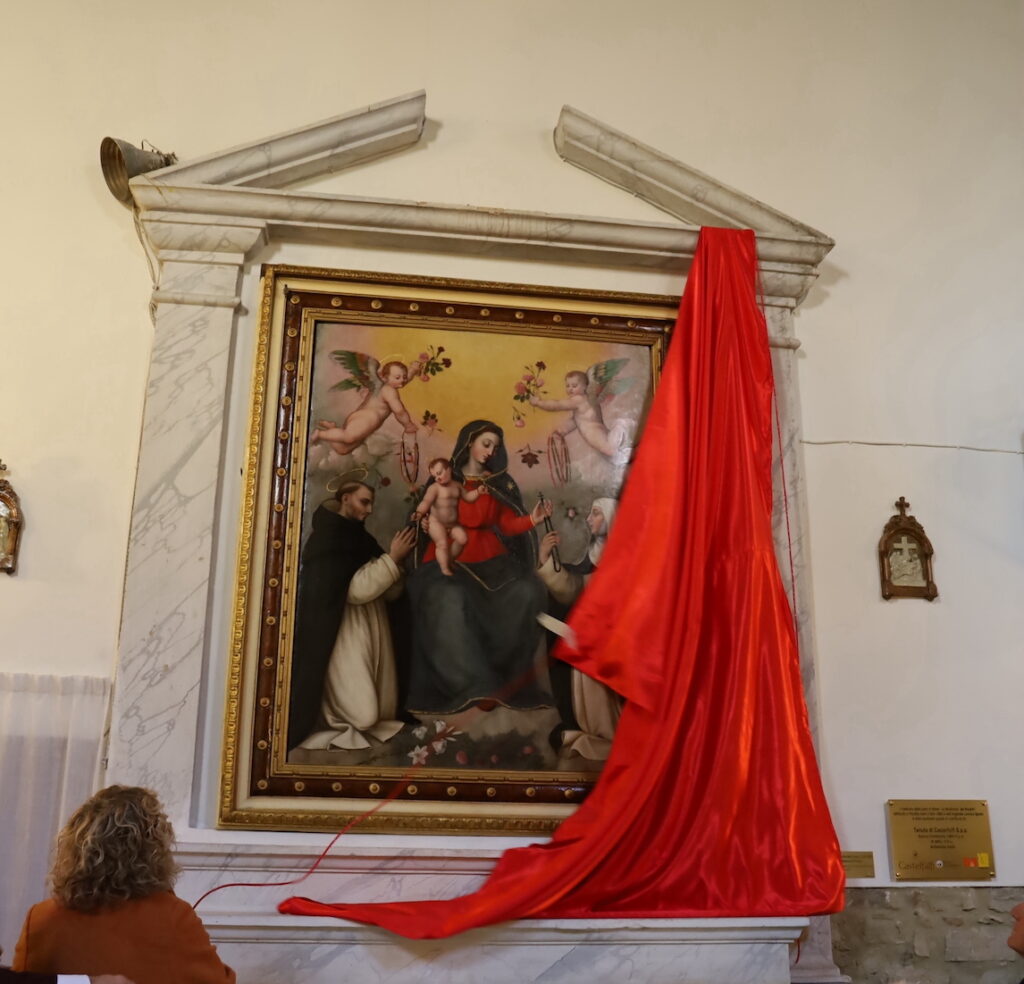
The unveiling was dedicated to the memory of Jane Fortune (1942–2018), the founder of Advancing Women Artists. Jane dedicated her life to uncovering and restoring paintings by hitherto unknown women artists, especially those with Florentine connections. It was Plautilla who inspired the mission, after Jane came by chance upon an old book about the artist-nun. Who was Plautilla Nelli?
Suor Plautilla Nelli, the first prominent Florentine woman painter
Pulisena Margherita Nelli was baptized on January 29, 1524. She became a nun at the Dominican monastery of Santa Caterina da Siena in the late 1530s. She was about 14 years old when she took the veil; at that time, she also took the name “Plautilla.” It may have been an older nun, Maria Cleofe Dello Scappella, who introduced her to the art of manuscript illumination. According to Giorgio Vasari, Plautilla became a miniaturist before undertaking easel painting. Her small-scale paintings were much admired and widely collected, she gained popularity for her emotionally resonant religious works. Madonna del Rosario, one of her most beautiful pieces, demonstrates her mastery in conveying devotional subjects with vivid detail and emotive expression.
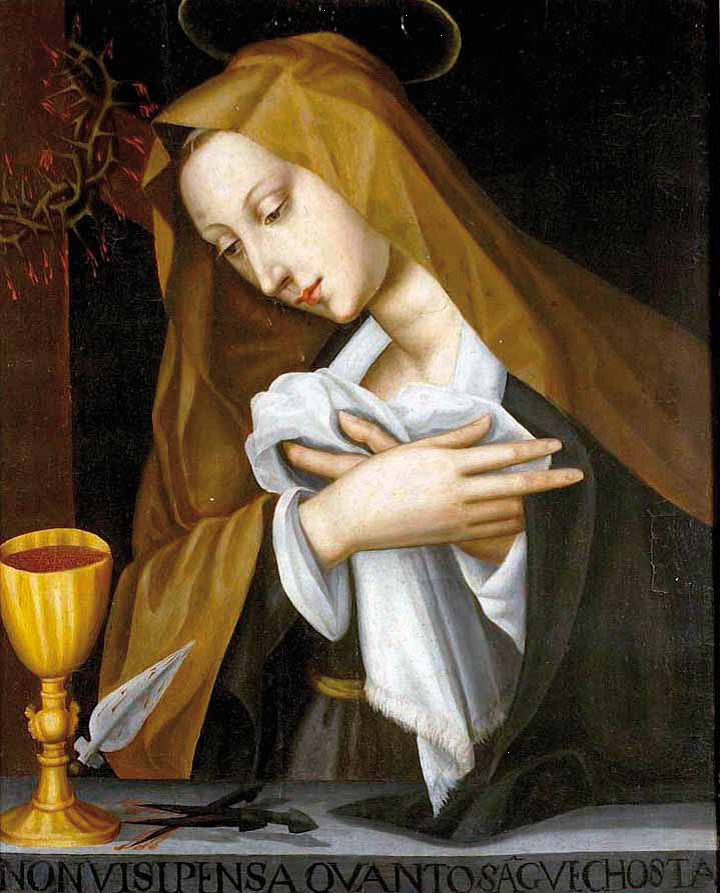
Plautilla Nelli’s artistic output
In composing her paintings, Plautilla often drew upon the work of older masters associated with the School of San Marco. She also referred to a large collection of drawings by Fra Bartolomeo della Porta that her monastery received after the death of his heir. The artist-nun painted altarpieces on wood and canvas. Contemporary sources record several of these large works, including two paintings for the side altars of Santa Caterina da Siena (Lamentation with Saints, now in the Museum of San Marco, Florence; Adoration of the Magi, lost in the 1800s), The Pentecost for S. Domenico in Perugia (still in its original location), and a Sacra Conversazione for Santa Lucia in Pistoia (lost in the 1800s).
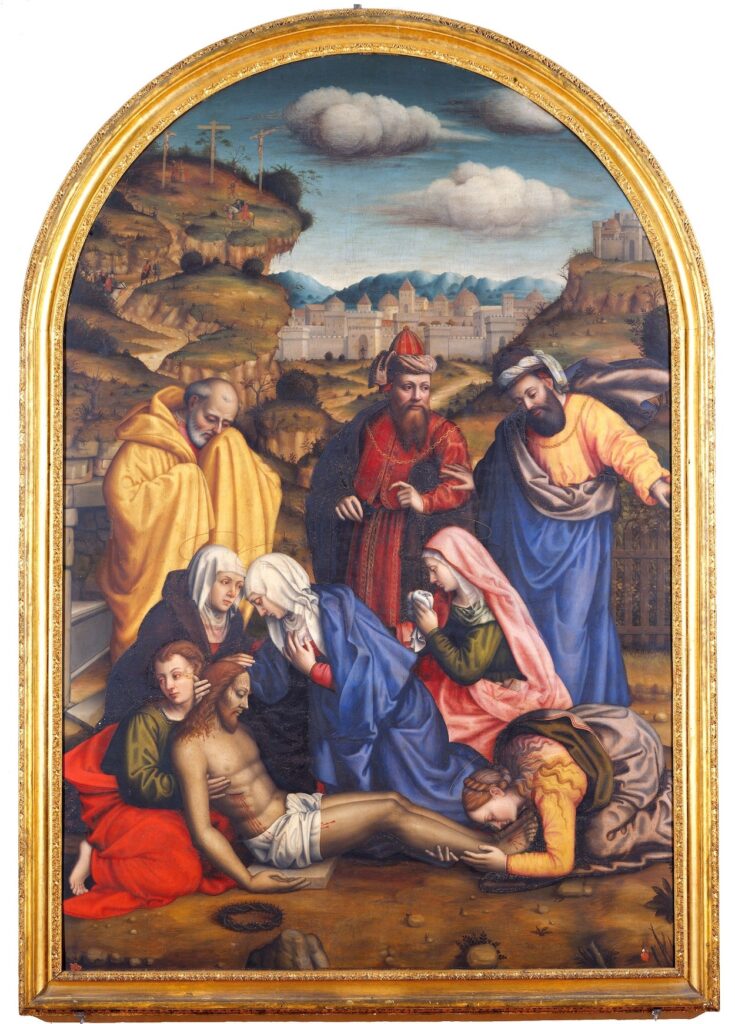
The Last Supper, and other Nelli works
Her largest known painting—measuring 6.5 by 25 feet—is The Last Supper, which hung in her monastery’s refectory. Other artist-nuns at Santa Caterina da Siena (now in the Museum of Santa Maria Novella) assisted with its production.

Rossella Lari restored the work in a project funded by Jane Fortune and Advancing Women Artists. Lari unveiled the restoration in 2019, and the painting is now at the Museum of Santa Maria Novella, Florence.

Three lunettes once installed above The Last Supper—St. Dominic Receiving the Rosary, The Crucifixion, and St. Catherine of Siena in Prayer—also were collaborative projects (now in the Museum of San Marco).
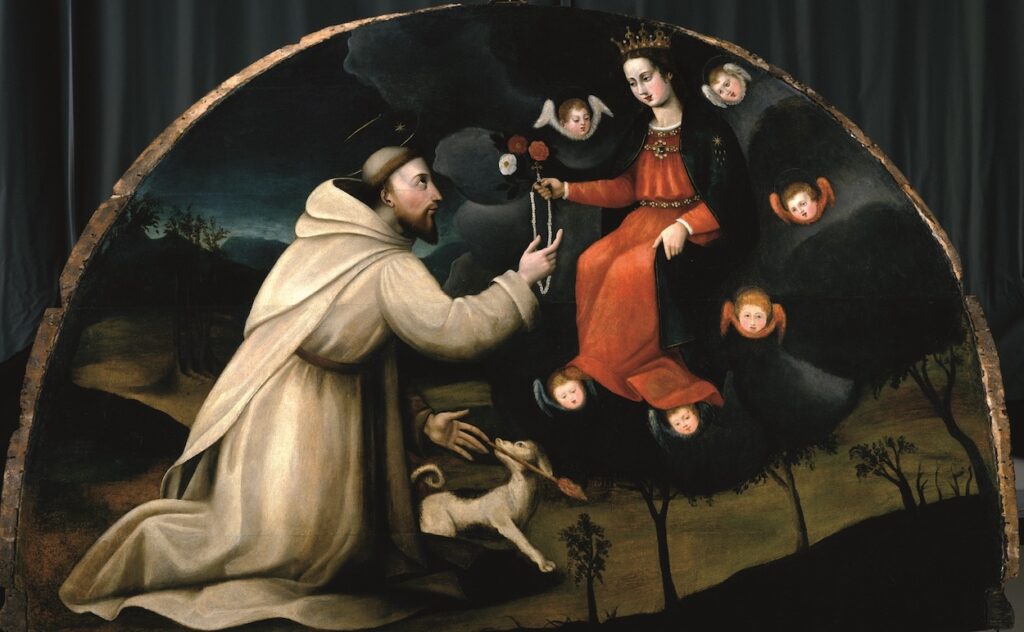
Plautilla Nelli’s last recorded painting was an altarpiece for her monastery’s dormitory. According to the sources, this lost panel painting by “Madre Suor Plautilla e le compagne” was finished by 1586, two years before Plautilla’s death. It depicted God the Father with Angels, St. Dominic, and St. Catherine of Siena.
More of Nelli’s extant paintings and drawings can be found in Florence (Museum of San Marco, Museum of the Cenacolo di Andrea del Sarto, Uffizi Gallery, Museum of Palazzo Vecchio), Fiesole, Siena, Perugia, Assisi, Utrecht, and the USA.
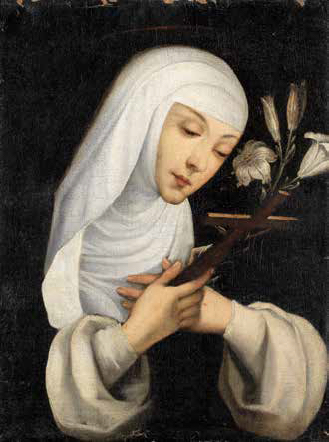
Plautilla Nelli today
Plautilla’s contemporaries celebrated and collected her art. But it was not until the 2000s that modern viewers began to recognize her accomplishments as a Renaissance painter and workshop administrator. The restoration of her works, combined with scholarly efforts to highlight her contribution to Renaissance art, bring recognition, finally, to Plautilla’s legacy as a pioneering female artist in a male-dominated field.
The restoration of Madonna del Rosario
Anna Floridia guided the restoration of Madonna del Rosario, with the Soprintendenza Archeologia, Belle Arti e Paesaggio for the metropolitan city of Florence and the provinces of Pistoia and Prato. A team of experts used a full range of careful diagnostics, analysis, and preservation techniques to uncover the original vibrancy and details of the painting. The restoration process was led by Florentine restorer Rossella Lari. The CNR National Institute of Optics provided crucial technical support for the diagnostic phase.
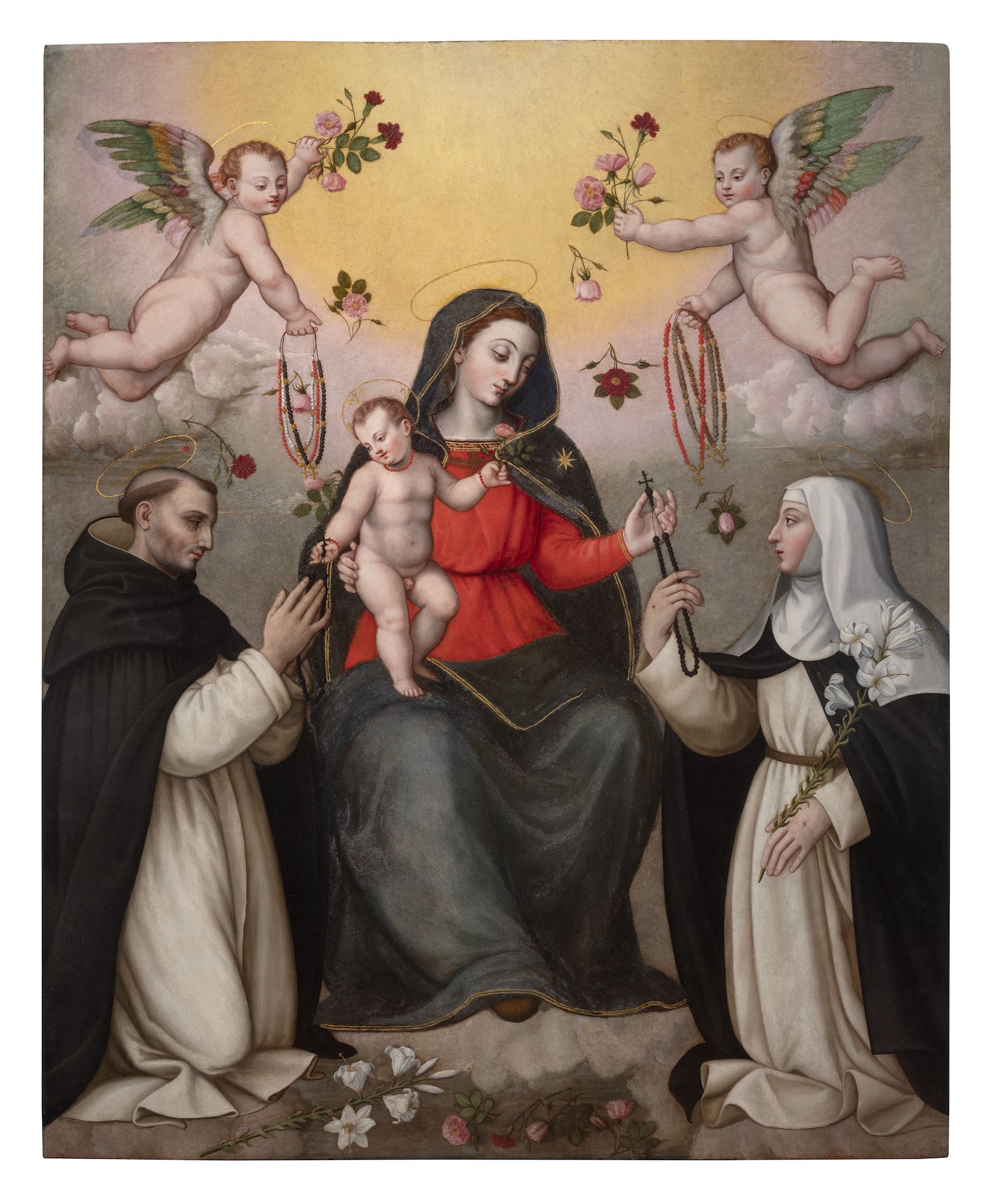
A collaborative effort
Historian Fausta Navarro , who curated the 2017 Plautilla Nelli exhibition at the Uffizi Gallery, discovered the Montaione altarpiece while doing research in 2016. She was the first person to attribute it to Plautilla. Catherine Turrill-Lupi, historian and Professor Emerita at California State University, Sacramento, has studied this painting and other paintings by Plautilla and her “Bottega” that also have come to light recently. They are collaborating to find out more about the history and provenance of this extraordinary work.
Special recognition goes to the sponsors who made this restoration possible with main sponsor Tenuta di Castelfalfi S.p.A with co-sponsors Banca Cambiano 1884 S.p.A., Bi.Bru s.r.l and Artemisia Gold CIC.
Plautilla’s Madonna del Rosario is installed in the Church of San Giuseppe and Santa Lucia, Montaione. The church was built in 1562 for a group of local women determined to create a sanctuary of faith. Remarkably, the altarpiece remains in its original frame, which the project’s organizers have also carefully restored.Thus the project not only restores a resplendent work of art, but also celebrates the unsung female artists of the Renaissance. Plautilla Nelli’s achievements, and those of other female artists in Florence, continue to inspire today, thanks to the dedicated efforts of scholars, restorers, and philanthropists working together to save and highlight their forgotten contributions.
About Jane Adams and Artemisia Gold CIC
Artemisia Gold CIC is a UK-based not-for-profit working globally, dedicated to reviving the love and appreciation for art through education, restoration, and immersive experiences. Founder Jane Adams, who worked with Jane Fortune and the Advancing Women Artists Foundation (closed after Fortune’s passing in 2018) strives to continue Fortune’s quest. The mission is simple but powerful: to rediscover, research, and restore overlooked masterpieces, with a special focus on female artists throughout history.
The organization offers unique opportunities for students, professionals, and art lovers to explore European art from the 1200s onward. Its work not only saves important, neglected artworks but also elevates the voices of forgotten female artists who deserve recognition. Artemisia Gold CIC collaborates with leading institutions, museums, churches, and scholars, forming global partnerships to ensure world-class and impactful restoration projects. Artemisia Gold also fosters a thriving international community of students, scholars, and professionals by providing access to lectures, workshops, and events that enhance their understanding of art history and restoration. The organization is committed to nurturing the next generation of art historians and restorers through hands-on opportunities. Follow Artemisia Gold on Instagram.
Past Artemisia Gold CIC initiatives
In 2024, in celebration of Plautilla Nelli’s 500th Birthday Anniversary, it was an honor for Artemisia Gold to participate in the restoration of two paintings by Plautilla Nelli, including the beautiful Montaione altarpiece and a small panel painting of The Madonna and Child with Saint Dominic, Saint Catherine and Saint Agnes. Artemisia Gold also hosted events and lectures in Florence at the Museum of Santa Maria Novella, Museum of San Marco, Biennale, Palazzo Corsini, Palazzo Tornabuoni as well as a special invitation to host a symposium at the Long Room Hub, Trinity College Dublin.
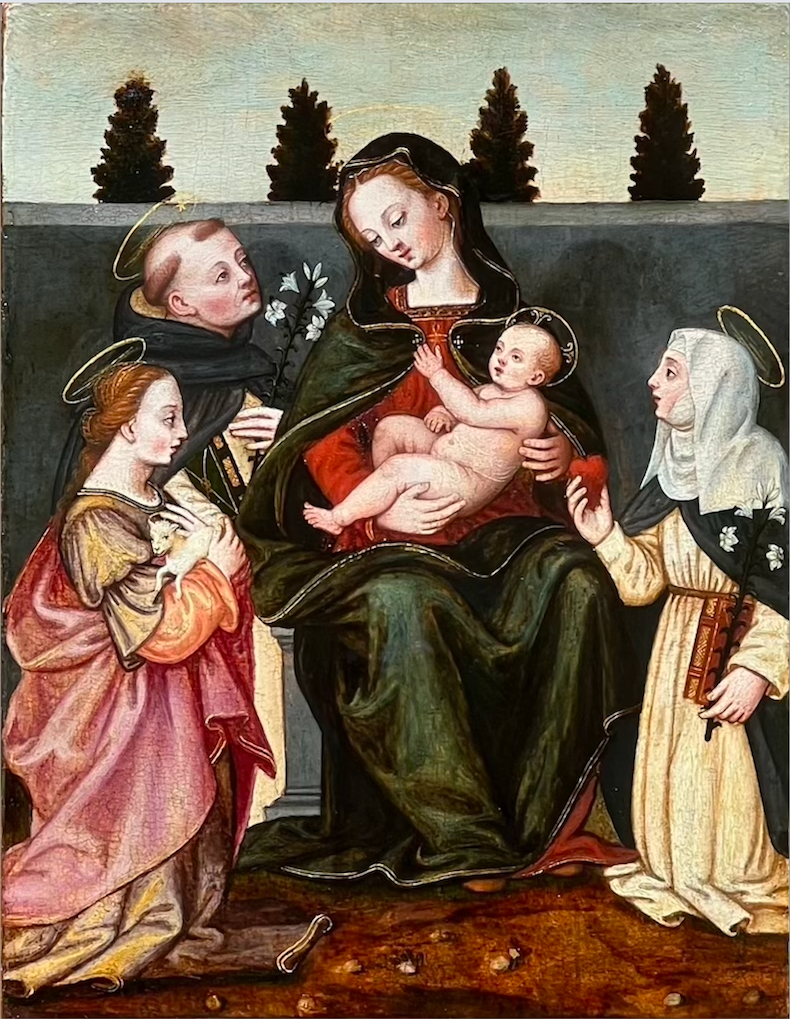
Current Artemisia Gold CIC initiatives
2025 will see ongoing initiatives surrounding Plautilla Nelli and the presentation of a new publication about Artemisia Gentileschi and two of her most loved works: Mother and Child and Santa Cecilia at the Spada Gallery in Rome.
More Art Herstory blog posts about artist-nuns:
Sister Eufrasia Burlamacchi (Lucca, 1478–1548), by Loretta Vandi
Orsola Maddalena Caccia (1596–1676), Convent Artist, by Angela Ghirardi
Sister Caterina Vigri (St. Catherine of Bologna) and “Drawing for Devotion,” by Kathleen G. Arthur
More Art Herstory blog posts about Italian women artists:
Plautilla Nelli and the Workshop of Santa Caterina in Cafaggio, by Alessia Motti
Roma Pittrice: Women Artists at Work in Rome Between the Sixteenth and Nineteenth Centuries, by Alessandra Masu
Maddalena Corvina’s Saint Catherine of Alexandria, by Kali Schliewenz
Exhibiting Artemisia Gentileschi; From the Connoisseur’s Collection to the Global Museum Blockbuster, by Christopher R. Marshall
Portrayals of Mary Magdalene by Early Modern Women Artists, by Diane Apostolos-Cappadona
Judith’s Challenge, from Lavinia Fontana to Artemisia Gentileschi, by Alessandra Masu
Stitching for Virtue: Lavinia Fontana, Elisabetta Sirani, and Textiles in Early Modern Bologna, by Patricia Rocco
Plautilla Bricci: A Painter & “Architettrice” in Seventeenth-century Rome, by Alessandra Masu
The Restoration of Royalty: Lavinia Fontana’s Queen of Sheba and King Solomon, by Aoife Brady
Giovanna Garzoni’s Portrait of Zaga Christ (Ṣägga Krǝstos), by Alexandra Letvin
Celebrating Bologna’s Women Artists, by Babette Bohn
Elisabetta Sirani of Bologna (1638–1665), by Adelina Modesti
Artemisia Gentileschi: What Wasn’t in the London Exhibition and Why it Matters, by Jesse Locker
Lavinia Fontana: Italy’s First Female Professional Artist, by Elizabeth Lev
Plautilla Bricci (1616–1705): A Talented Woman Architect in Baroque Rome, by Consuelo Lollobrigida
Two of a Kind: Giovanna Garzoni and Artemisia Gentileschi, by Mary D. Garrard

